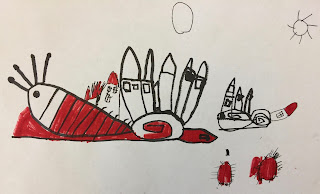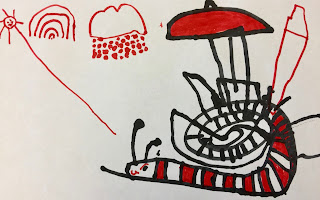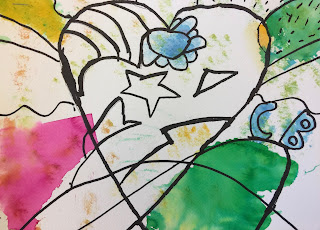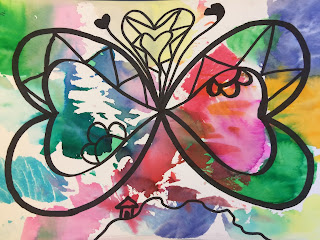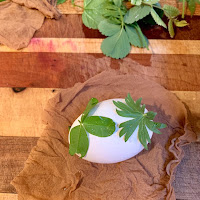2018 California Teacher of the Year Honoring and Gala
Out of more than 300,000 K-12 teachers in California 5 teachers were recognized California's top teachers and 7 teachers were awarded the title California Teacher of the Year finalists. I am feeling incredibly lucky to count myself as a member of the CaTOY family. Congratulations to all CaTOY Winners and Finalists!
With great respect and pride we were welcomed on Feb. 12 in Sacramento at the Finalist Luncheon and honoring Gala. I was able to meet and connect with the other outstanding teachers. My heart was absolutely bursting with pride in the teaching profession. Teachers speeches were eloquent, and their faces radiated, as they shared their passion for their work with their students.
Thank you California Department of Education and CaTOY foundation for this unforgettable experience.
With great respect and pride we were welcomed on Feb. 12 in Sacramento at the Finalist Luncheon and honoring Gala. I was able to meet and connect with the other outstanding teachers. My heart was absolutely bursting with pride in the teaching profession. Teachers speeches were eloquent, and their faces radiated, as they shared their passion for their work with their students.
Thank you California Department of Education and CaTOY foundation for this unforgettable experience.
Heroes & Hearts
Arts: Share the Love
North Bay artists leave their hearts in San Francisco
For more than 50 years, the city of San Francisco has been synonymous with the heart, thanks to a certain Tony Bennett song.
In 2004, the San Francisco General Hospital Foundation used the image of the heart for Hearts in San Francisco, a fundraising public art project in which Bay Area artists designed and created a work of art on blank 3-dimensional heart sculptures in varying sizes.
Many of these heart sculptures can be seen throughout the city, and each year the foundation commissions new artists to participate in Hearts in San Francisco as an annual program that culminates in a Heroes & Hearts luncheon, this year scheduled for February 15 at AT&T Park in San Francisco. Thirty-six new heart sculptures by 23 Bay Area artists will be displayed and auctioned to benefit Zuckerberg San Francisco General Hospital and Trauma Center, including works from several North Bay artists.
Marin-based painter and art educator Barbara Libby-Steinmann’s entry in Hearts in San Francisco is a triptych of mini-hearts painted to depict the city’s famous wild parrots of Telegraph Hill. The colorful and playful art reflects Libby-Steinmann’s work as a K-4th-grade art teacher at Bacich Elementary School in Kentfield. Last year, Libby-Steinmann was named Marin Teacher of the Year, and for Hearts in San Francisco, she got her students involved.
“For the longest time, I kept my work totally separate from my teaching job,” Libby-Steinmann says. “All of a sudden I realized, wait a minute, I’m an artist. I should make a real connection to [my students] about how artists work in today’s society and especially how artists can make a difference in their community.
“The Hearts in San Francisco project really interested me because it’s such a wonderful cause, raising money for the hospital foundation,” she continues. Once she was chosen to participate in this year’s project, she took it to her classrooms and showed her students the process of designing and painting the three hearts. Libby-Steinmann also convinced the foundation to have her students collaborate on creating 25 2-dimensional heart paintings that will be online for purchase as part of the fundraiser. “It’s a full circle of my work,” Libby-Steinmann says.
Photo courtesy of Hearts in San Francisco

Transitional Kindergarten: Snail Line Drawings & RED
TK Students were introduced to the works of Saul Steinberg. Steinber (1914-1999) was a Romanian and American cartoonist and illustrator, best known for his work for The New Yorker. He described himself as a "writer who draws".
Drawing is one of the most important activities for students to practice and it is best to start the practice at a young age. Drawing not only provides the basis for other creative activities- like painting, sculpture and printmaking- but is also provides a direct link with reading, writing and especially mathematics. Drawing is the single most accessible form of art available.
TK students used a bold sharpie pen to draw a variety of lines to create an imaginary snail. Students drew a spiral shell into which the snail can withdraw its whole body. Students imagined other creatures living with the snail and drew houses for the "snail's friends" on top and around the spiral shell. The story telling began and an entire snail community was created!
Steinberg often used the color Red to embellish his drawings. Likewise TK students used the powerful hue to add finishing touches to their snail drawing master pieces.
Drawing is one of the most important activities for students to practice and it is best to start the practice at a young age. Drawing not only provides the basis for other creative activities- like painting, sculpture and printmaking- but is also provides a direct link with reading, writing and especially mathematics. Drawing is the single most accessible form of art available.
TK students used a bold sharpie pen to draw a variety of lines to create an imaginary snail. Students drew a spiral shell into which the snail can withdraw its whole body. Students imagined other creatures living with the snail and drew houses for the "snail's friends" on top and around the spiral shell. The story telling began and an entire snail community was created!
Steinberg often used the color Red to embellish his drawings. Likewise TK students used the powerful hue to add finishing touches to their snail drawing master pieces.
Kindergarten: Recycled Robots
Kindergarten students studied basic geometric shapes and used the shapes to sketch a whimsical robot. Using the sketches as their guides, students practice scissor skills to cut geometric shapes out of recycled materials to build and collage the structural parts of their robots. Recycled metals and plastic washers were added for details such as eyes, wheels and buttons. To finish off the robot piece, students created a fancy frame out of recycled materials.
During our closure circle sharing activity students used the JUNO classroom microphone to introduce their robots to the class and shared what activities their robots can do.
During our closure circle sharing activity students used the JUNO classroom microphone to introduce their robots to the class and shared what activities their robots can do.
1st GRADE: Henri Matisse Paper Cut-Outs
Henri Matisse (1869-1954) gave up a law career to take up art. While Matisse’s early avant-garde style was quite conventional, his later work became more abstract, characterized by flat shapes and controlled lines, with expression dominant over detail and a fondness for bright colors. Later in life, a serious illness confined Matisse to just his bed and wheelchair. Amazingly, from there he created some of his finest works-- the enormous and breathtaking paper cut-outs.
Students were introduced to the book Henri's Scissors by Jeanette Winter. After reading the book, students experimented "drawing/painting with scissors". Students cut free-form shapes, lines and movements of an imaginary garden out of bright colored collage paper. Students composed and overlapped their cut-out shapes and glued them onto a white background. To complete the paper cut-out collage students designed black silhouette shapes depicting animals, or plants for their imaginary gardens.
2nd GRADE and 3rd GRADE: Hearts Inspired by Romero Britto
Students were introduce to the works of Romero Britto. Romero Britto (born October 6, 1963) is a Brazilian artist, painter, serigrapher, and sculptor. The distinctive neo-Pop style of Romero Britto, whose compositions skillfully balance colorful patterns and bold, black outlines, reveals a highly sophisticated command of space, color and the visual experience. He often combines the artistic techniques of Pop Art with the intricate compositional qualities of Cubism. His work has been called "childlike," not that he paints as a child would, but rather that he creates with the clear eye, enthusiasm and directness of children. His passion for creating artwork led to many high-profile commissions which helped launch the artist onto the contemporary art scene in a very short period of time. Britto began drawing at a very young age and soon learned to copy the artwork of artists he saw in books. He originally considered a career in law, but followed his passion for art to Europe, where he sold his paintings on the street.
Second and third grade students combined basic elements and shapes and used vibrant colors and bold patterns as a visual expression of love hope and happiness. Students drew large heart and/or geometric shapes in
black sharpie pen, breaking up their main center shapes into smaller shapes. Students were given a choice to break the background up into shapes and patterns or leave the
background blank. Students were encourage to use a variety of lines (bold and
thin). Students used a tissue paper bleeding technique to create a beautiful batik/watercolor look on
the watercolor paper. Students used their knowledge of warm and cool colors to achieve impressive composition. Students used tempera paint sticks to color the backgrounds.
4th GRADE: Bacich Community Art Fence
Fourth grade student continued their collaborative work on our Bacich Community Art Fence project. Students sketched large scaled California symbols and traced their symbols onto plywood. Using coping saws student showed great perseverance sawing their pieces out giving their arm and hand muscles a workout! Students carefully sanded their pieces and applied a white gesso primer to seal the wood.
During following art classes students will paint their plywood pieces in either realistic or artistic coloring schema. To add finishing touches students will work with upcycling using collected lids, tops, and bottle caps to embellish, decorate and accent their art pieces. In May/June pieces will be assembled onto chain-link fence along Sir Francis Drake Boulevard.









